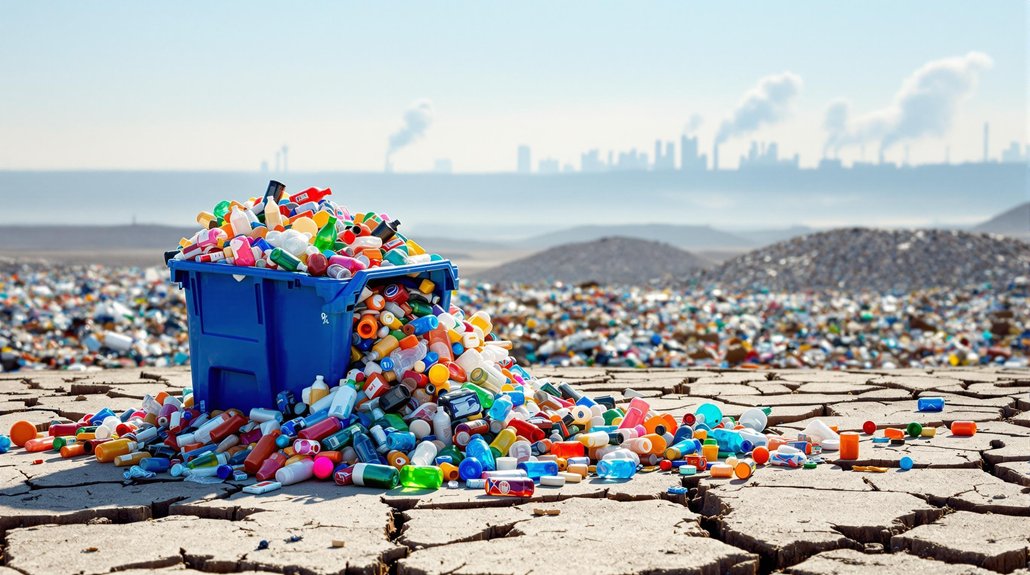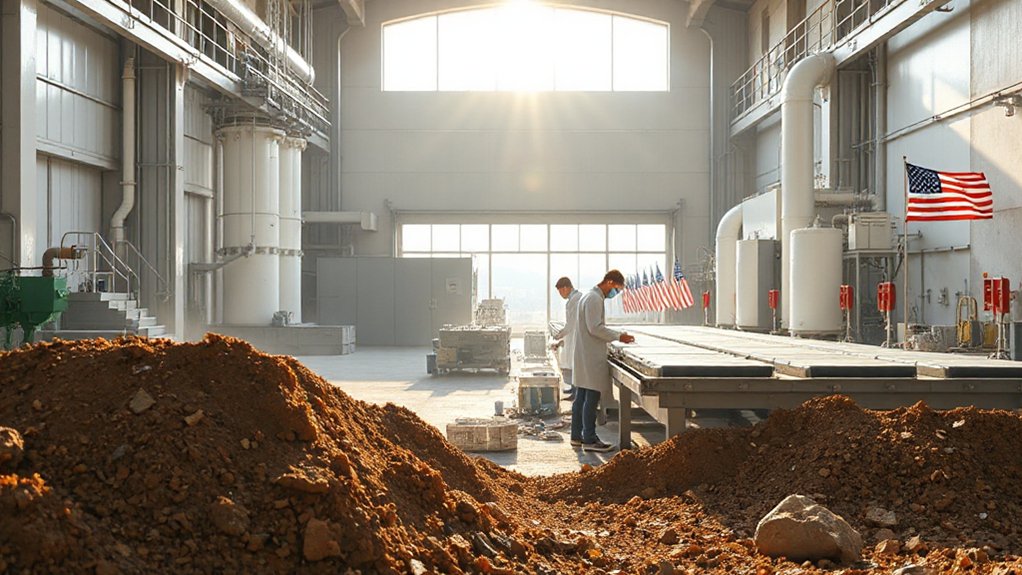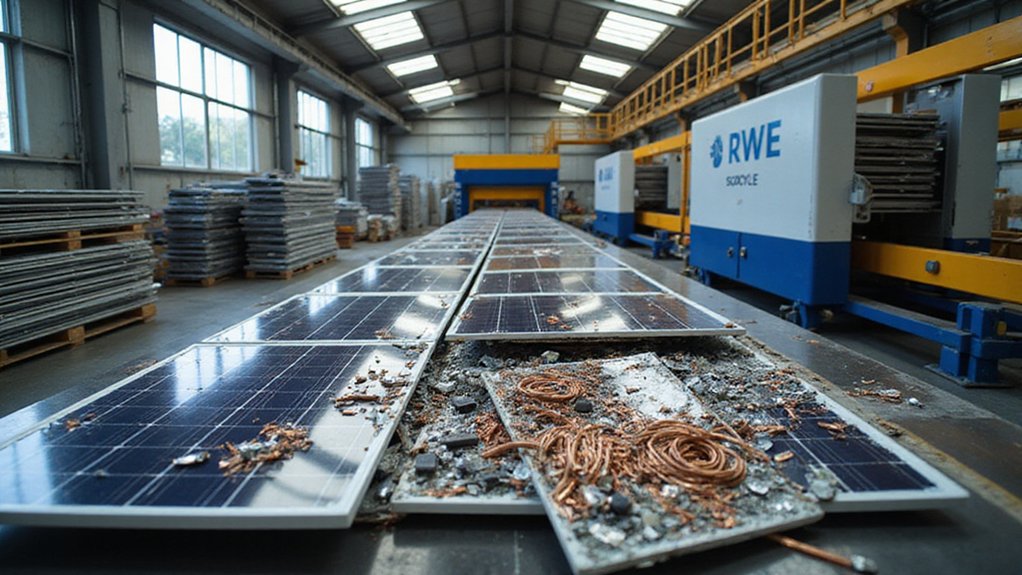Global plastic recycling remains stuck at 9%, with most waste ending up in landfills (57%) or being incinerated (29%). While the EU achieves a 41% recycling rate for packaging, the US lags at just 5%. Challenges include contamination, sorting issues, and weak economic incentives. Despite the dismal statistics, some progress exists in specific sectors like PET bottle collection. Solutions require addressing both technical barriers and policy gaps.
The alarming reality of global plastic recycling shows that only 9% of all plastic waste actually gets recycled. Despite growing awareness about plastic pollution, most plastic ends up in landfills (57%) or is incinerated (29%), with another 6% mismanaged and leaking into the environment. These numbers paint a troubling picture as plastic production continues to rise faster than recycling efforts can manage.
Despite our recycling awareness, a mere 9% of plastic waste gets recycled while most ends up filling landfills or polluting ecosystems.
Different regions show varied success with recycling programs. The European Union leads with a 41% recycling rate for plastic packaging waste. In contrast, the United States lags behind at just 5%, the lowest rate among developed nations. China and India perform slightly better, recycling about 13% of their plastic waste. OECD countries, which generate half of the world’s plastic waste, recycle less than 10% overall.
Plastic recycling faces many challenges. Contamination and sorting problems cause significant losses in the recycling process. In Europe, only 54% of collected PET plastic gets properly sorted for recycling. Plastic must be separated by polymer type for effective recycling, which adds complexity and cost. Single-use plastics flood waste streams and are often difficult to process. The US plastics recycling rate peaked at only 9.5% even when including exports to other countries. The construction industry uses hard-to-recycle plastics like PVC, leading to very low recycling rates in that sector.
The environmental toll is severe. Plastic in landfills persists for centuries, while incineration releases greenhouse gases. Mismanaged plastic breaks down into microplastics, causing widespread pollution. OECD countries contribute to 14% of global plastic leakage into the environment.
Policy gaps worsen the situation. While the Basel Convention now restricts global plastic waste exports, there’s still no consistent worldwide approach to plastic management. Economic incentives for recycling remain weak in most regions. The United States burned six times more plastic than it recycled in 2016.
Some progress exists in specific sectors. EU packaging recycling reaches 38%, and PET bottles achieve 60% collection rates. However, experts increasingly suggest that focusing on reducing plastic use, rather than improving recycling, might be the more effective solution to the growing crisis.









